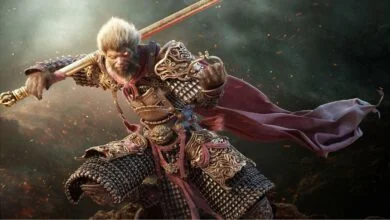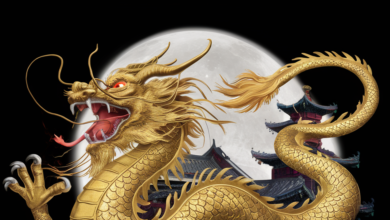
Table of Contents
Shadow puppetry, an ancient and mesmerizing form of storytelling, has captivated audiences across the world for centuries. Known as «皮影戏» (pí yǐng xì) in China, shadow puppetry employs intricately designed figures to tell tales through the interplay of light and shadow. This article takes you on a journey through the history, cultural significance, craftsmanship, and performance techniques of shadow puppetry, highlighting its global influence and enduring charm.
A Glimpse into History
Picture this: Over 2,000 years ago, during the Han Dynasty in China, Emperor Wu of Han was grieving the death of his beloved concubine, Lady Li. An advisor, in a bid to console the heartbroken emperor, crafted a silhouette of Lady Li from fabric and used a lamp to cast her shadow on a curtain. The emperor, captivated by the shadow play, found solace in this enchanting spectacle. And thus, legend has it, shadow puppetry was born.
Throughout the centuries, shadow puppetry flourished in China, reaching its golden age during the Tang (618-907 CE) and Song (960-1279 CE) dynasties. It wasn’t long before this captivating art form spread along trade routes, influencing cultures far and wide.
Cultural Significance: More Than Just Shadows
Shadow puppetry is more than mere entertainment; it is a cultural treasure trove. In rural China, shadow puppetry has been a beloved form of storytelling for generations. Performances often coincide with festivals, celebrations, and religious rituals, acting as a conduit for folklore, history, and moral lessons.
Different regions in China have developed unique styles of shadow puppetry. For instance, Shaanxi Province is renowned for its detailed and colorful puppets, while Beijing’s puppets are celebrated for their elegance and refinement.
The Art of Creating Shadow Puppets
Creating shadow puppets is an art that demands patience, precision, and passion. Here’s a step-by-step look at how these intricate figures come to life:
- Selection of Material: The journey begins with choosing the right animal hide—cow, sheep, or donkey skin. This hide is cleaned thoroughly to remove any fat and hair, ensuring a smooth surface.
- Preparation of the Hide: The cleaned hide is soaked in water to soften it, a process that can take days. Once softened, the hide is stretched on a frame and left to dry under the sun, tightening it and enhancing its translucency.
- Designing and Drawing: Next, the artist draws the desired designs on the hide using charcoal or ink. This step requires a keen eye for detail, as the complexity of the design will influence the final appearance of the puppet.
- Cutting: Using more than 30 different knives and chisels, the designs are meticulously cut out. This is the most intricate part of the process, demanding precision to ensure the puppet’s details are clearly visible when projected as shadows. The craftsmen employ both dark and light carving techniques to add depth and contrast, creating a more dynamic visual effect.
- Coloring: The cut-out puppet is then painted with vibrant colors. Traditional shadow puppetry uses natural pigments from plants, minerals, and other organic materials. The colors are applied meticulously, often in multiple layers, to achieve the desired intensity.
- Assembly: The various parts of the puppet—head, limbs, and body—are assembled using thin leather strips or thread. These joints allow for movement and flexibility, enabling the puppeteer to bring the puppet to life.
- Final Touches: The completed puppets are treated with a layer of oil to enhance their translucency and durability, protecting the colors and preventing the puppet from becoming brittle over time.

Bringing Shadows to Life: Performance Techniques
Imagine a dimly lit room, a white screen, and the soft glow of a lamp. Behind the screen stands a skilled puppeteer, ready to weave a tale. The puppeteer manipulates the puppets between the screen and the light source, casting intricate shadows that dance and play.
- Manipulation of Puppets: The puppeteer uses rods attached to the puppets to control their movements. These rods are skillfully maneuvered to create lifelike actions such as walking, dancing, and fighting.
- Lighting: The choice of lighting is critical. Traditionally, oil lamps were used, but modern performances often employ electric lights. The light source is positioned to cast sharp and clear shadows, with intensity and direction adjusted for different effects.
- Music and Sound Effects: Music is integral to shadow puppetry, setting the mood and enhancing the storytelling. Traditional performances feature live music played on drums, gongs, flutes, and stringed instruments. Sound effects mimic actions like walking and fighting, adding depth and realism.
- Narration and Dialogue: The puppeteer often serves as the narrator, providing voices for the characters and guiding the audience through the story. The dialogue is performed in sync with the puppet’s movements, requiring mastery of ventriloquism and voice modulation.
Shadow Puppetry Around the World
While China is the birthplace of shadow puppetry, this art form has spread far and wide, each culture adding its own unique twist:
- Indonesia: Known as «Wayang Kulit,» Indonesian shadow puppetry is famous for its elaborate and stylized figures, often depicting scenes from Hindu epics like the Ramayana and Mahabharata.
- India: In India, shadow puppetry goes by various names such as «Tholu Bommalata» in Andhra Pradesh and «Chamadyacha Bahulya» in Maharashtra. Indian puppets are typically larger and more colorful.
- Turkey: Turkish shadow puppetry, known as «Karagöz,» features humorous and satirical stories. The puppets, made from camel or water buffalo hide, often reflect social and political commentary.
- Greece: Greek shadow puppetry, called «Karagiozis,» was influenced by the Turkish Karagöz. It features comical characters and social commentary, blending humor with moral lessons.
The Shaanxi Shadow Puppet Museum: A Treasure Trove
The Shaanxi Shadow Puppet Museum in Xi’an holds tens of thousands of exquisite shadow puppets from the Ming and Qing Dynasties, as well as countless props and sets. This collection includes the highly acclaimed «Along the River During the Qingming Festival,» known as the «Guinness of Shadow Puppets.» The museum’s collection encompasses everything needed for a shadow puppet performance, from large backdrops to various characters representing different archetypes.
The museum’s collection includes everything needed for a shadow puppet performance. From large backdrops to various characters representing different archetypes, and an array of props such as carts, chariots, tables, chairs, beds, flowers, trees, and small animals. These exquisite shadow puppets are considered treasures of the museum and hold significant collectible value.
Shaanxi shadow puppets are distinguished by their intricate patterns and vibrant designs, making them top-tier examples of the art form. The museum features exceptional pieces from the Ming Dynasty’s «The Eight Immortals Cross the Sea» and the Qing Dynasty’s «Crystal Palace,» «Garden,» and «Investiture of the Gods,» among others. These works are masterpieces of shadow puppetry, demonstrating the skill and creativity of the artists.
In the museum, you can see the exaggerated facial features of Shaanxi shadow puppets, which reflect traditional Chinese physiognomy and symbolism. Male characters often have bold, prominent features, while female characters have high foreheads and straight noses. These stylized representations convey the character’s nature—whether they are virtuous or villainous, kind or cunning. This abstract imagery is deeply connected to Chinese mysticism and cultural traditions.
Today, well-preserved shadow puppets from the Ming and Qing Dynasties can be worth thousands of yuan each. Early 20th-century pieces from Shaanxi fetch high prices, while other regions like Sichuan and Hebei offer more affordable options. Works by renowned artists, such as the shadow puppet master Wang Tianwen, are highly valuable. Wang’s pieces can sell for over 10,000 yuan per square foot, with his collaborative work «Along the River During the Qingming Festival» estimated to be worth 8 million yuan.
Preservation and Revival: Keeping the Shadows Alive
In an age dominated by digital entertainment, traditional shadow puppetry faces the risk of fading into obscurity. However, efforts to preserve and revive this ancient art form are gaining momentum.
- Educational Programs: Schools and universities in regions with a rich tradition of shadow puppetry have incorporated it into their curricula. These programs teach students the history, cultural significance, and techniques of shadow puppetry, ensuring that the knowledge is passed down to future generations.
- Festivals and Competitions: Shadow puppetry festivals and competitions are held globally to celebrate and showcase the art form. These events provide a platform for puppeteers to demonstrate their skills, exchange ideas, and gain recognition.
- Modern Adaptations: Artists are exploring modern adaptations of shadow puppetry, incorporating new materials, digital technology, and contemporary stories. These innovations help bridge the gap between tradition and modernity, attracting a wider audience.
The Shaanxi Shadow Puppet Museum is home to master artists known as the «Three Musketeers of Shadow Puppetry»—Jiang Guoqing, Wang Tianwen, and Li Shijie. These masters are pivotal in the preservation, design, carving, and performance of shadow puppetry. Jiang Guoqing, the museum director, has spent decades collecting and creating shadow puppets, while Wang Tianwen, a master carver, has trained numerous artists in the craft. Li Shijie, known for his performances, has earned acclaim for his mastery of traditional shadow puppet roles.
Jiang Guoqing, the leader of the «Three Musketeers,» has dedicated his life to the art of shadow puppetry. Since 1980, he has created and replicated countless shadow puppets and traveled across Shaanxi to collect scattered pieces from the Ming to modern times. His collection includes over 20,000 items, including more than 3,000 facial masks.
Wang Tianwen, apprenticed to the famous shadow puppet master Li Zhanwen at the age of 12, has worked in shadow puppetry for over 40 years. His exquisite carvings are highly sought after by collectors and museums in China and abroad. Li Shijie, trained by his father, a renowned shadow puppeteer, has been performing since the age of seven. He has mastered numerous plays and is celebrated as a national treasure of Chinese music.
In 2003, Jiang Guoqing, Wang Tianwen, and 18 other artists created the largest shadow puppet work in history, «Along the River During the Qingming Festival.» This masterpiece, based on the famous handscroll painting, features intricate carvings and traditional techniques, vividly bringing the original artwork to life.
Conclusion: A Dance of Light and Shadow
Shadow puppetry is a testament to the power of storytelling, the magic of light and shadow, and the timeless allure of tradition. As we celebrate and preserve this ancient art form, we ensure that the enchanting dance of shadows will continue to captivate hearts and minds for centuries to come. Through the dedicated efforts of artists, educators, and cultural institutions, the shadows will continue to dance, telling stories that transcend time and space.

Click here for a video with more information!

